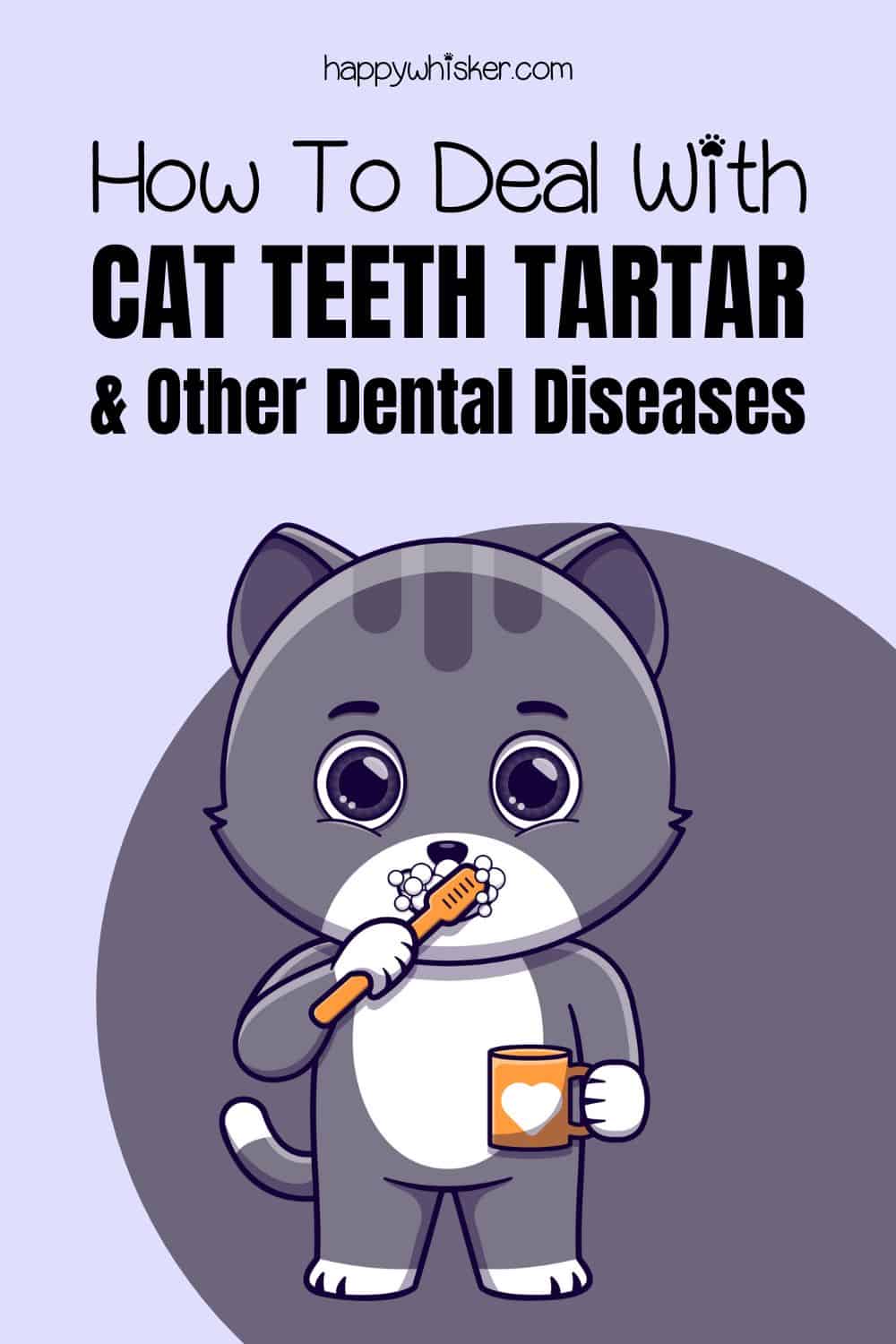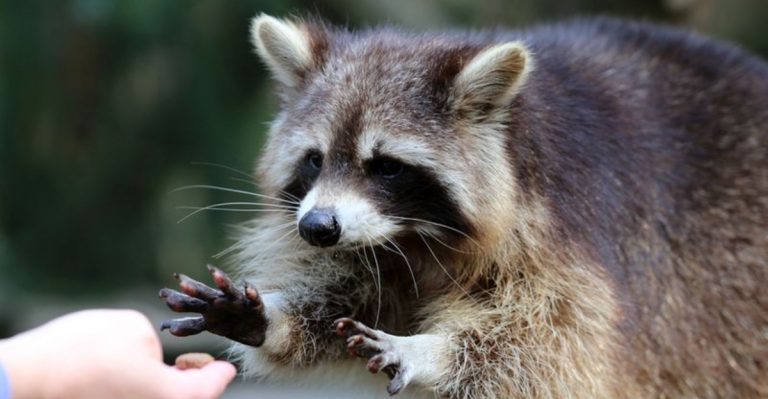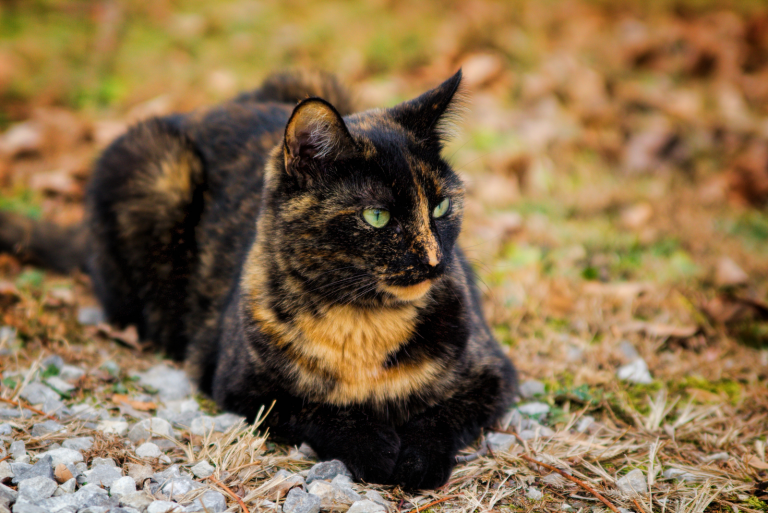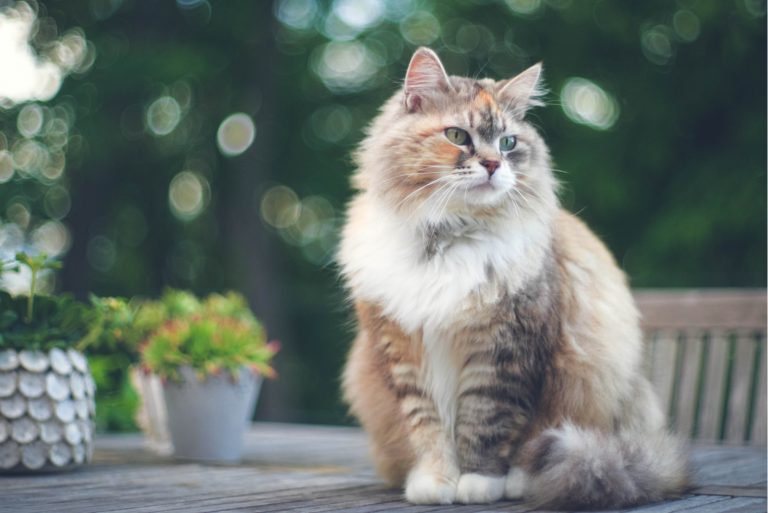How To Deal With Cat Teeth Tartar And Other Dental Diseases
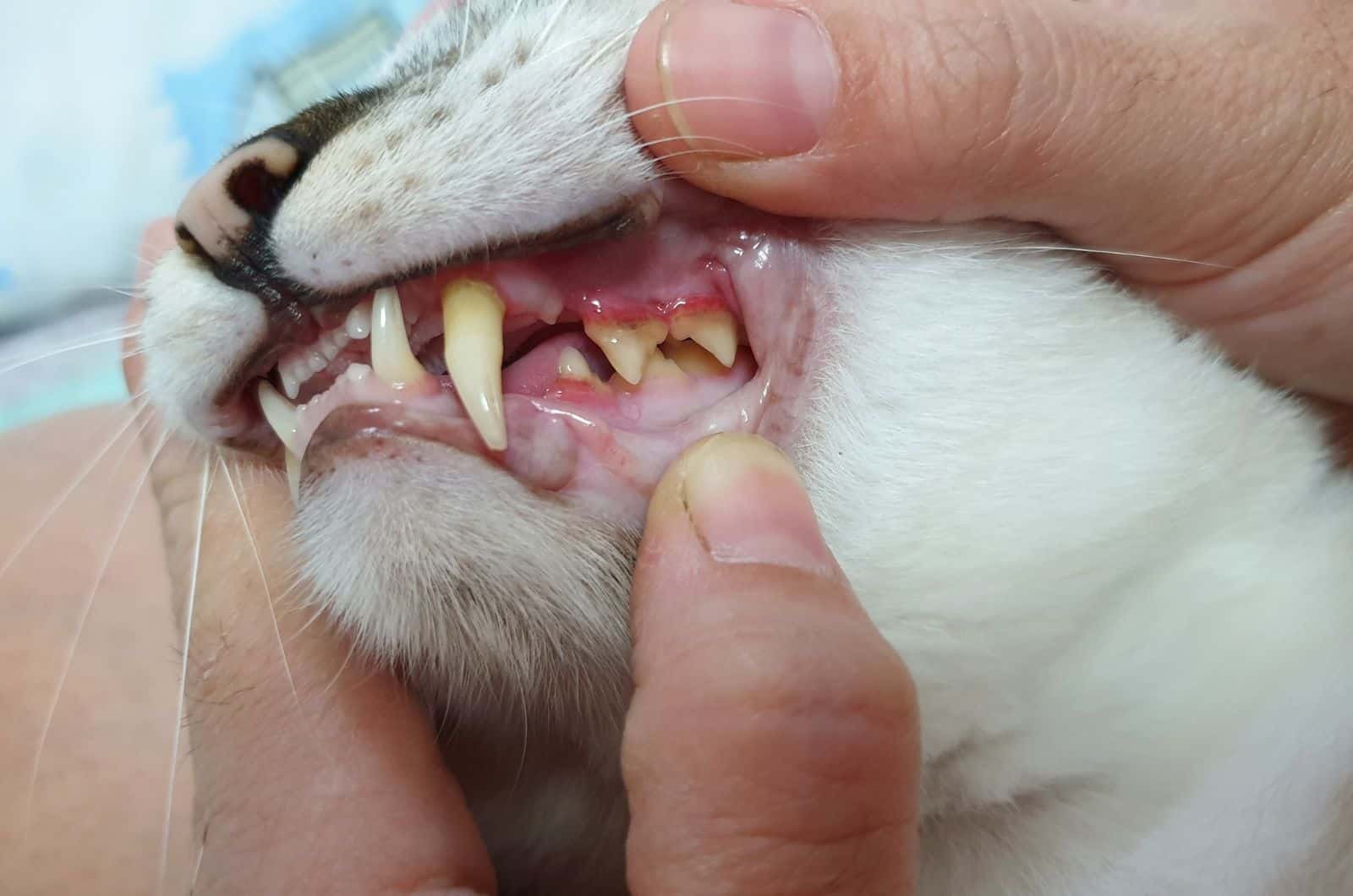
Most cat owners have to deal with cat teeth tartar at some point in their cat’s life. It’s a natural thing that happens to our feline friends, just as it can happen to us.
When it comes to cats and dental tartar, more severe health issues can occur if it is not cleaned up. Your cat’s health is the most important thing, so it’s good that you’re doing research about this aspect of cat care!
Cat teeth tartar is quite tricky to deal with, but it can be cleaned effectively and prevented easily going forward! Perhaps you’re just learning about cat teeth tartar and dental diseases in felines, or maybe your cat is having some issues.
In any case, read on to find out everything you need to know about it.
Cat Teeth Tartar
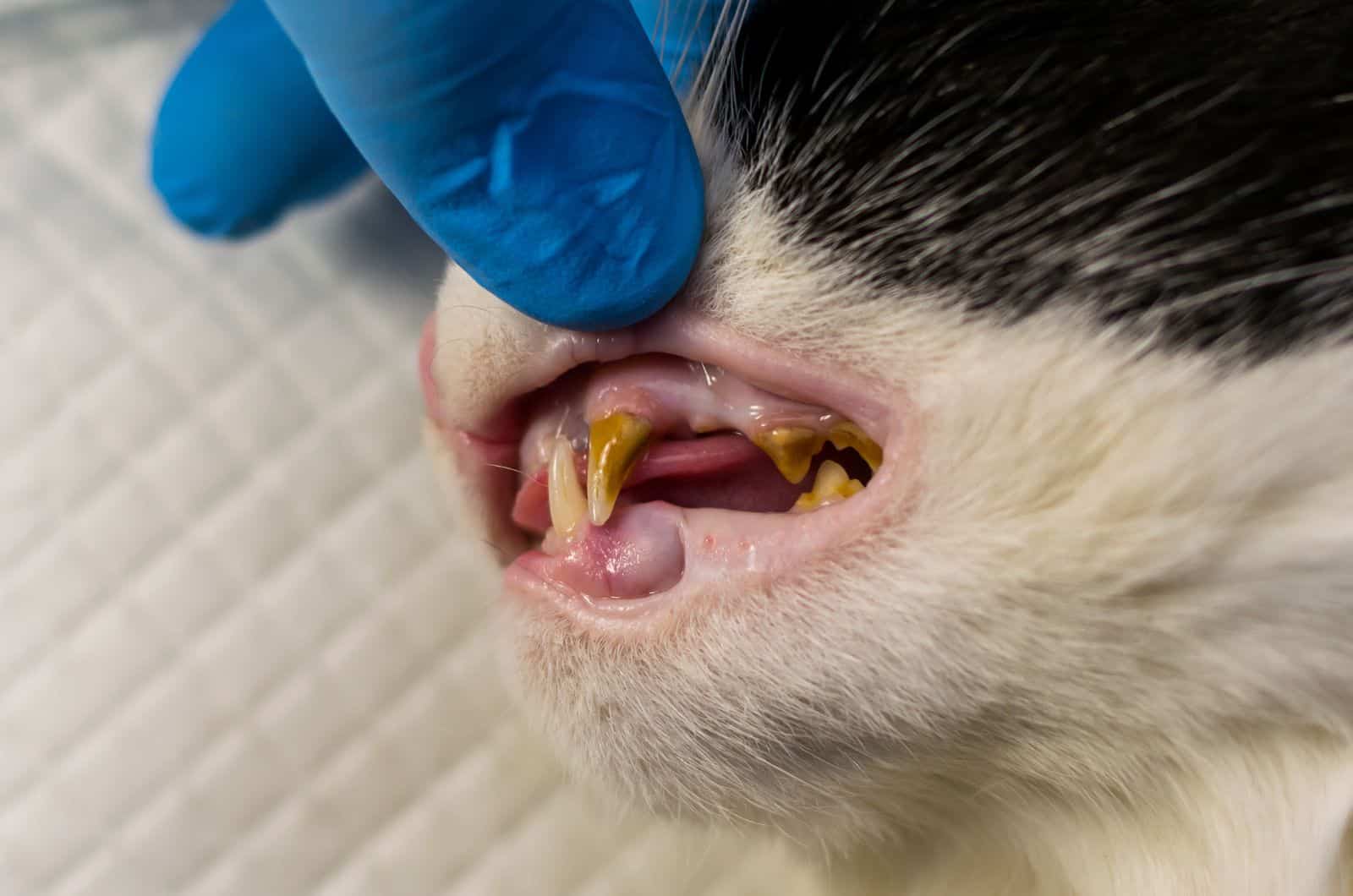
A cat’s mouth is generally home to many bacteria, which get mixed with fragments of food, which then get transformed into plaque. If plaque is not cleaned off, it can harden owing to the accumulation of chemicals, like calcium, in it.
Dental ‘tartar’ or ‘calculus’ is hard, calcified plaque. Tartar buildup on your cat’s teeth can lead to more severe dental issues such as tooth loss, inflammation, or gum diseases. This all makes chewing very difficult, and it gives your cat bad breath.
Some of these dental issues, like inflammation and infection, can affect a cat’s internal organs as well, resulting in more severe health issues.
By getting rid of tartar build-up on cat teeth and keeping your cat’s teeth clean and its gums healthy, you’re preserving its dental health and avoiding the risk of painful complications.
Tartar is easily visible on the enamel surface; it appears as a yellow or brownish firm deposit. In extreme circumstances, a substantial quantity of tartar can build up on the surface of the teeth.
Once tartar builds up, it’s too late for its prevention, and we have to look for possible solutions. The most effective method to remove major tartar buildup from your cat’s teeth is to have it removed professionally by the vet.
Tartar cannot typically be eradicated by basic techniques like cleaning a cat’s teeth, so dental scraping (carried out by your vet under anesthesia) is frequently necessary.
You can help prevent tartar by frequent brushing and cleaning, adding dental treats to the cat’s diet, and making sure your cat eats kibble daily as well. Let’s see what can help get rid of cat teeth tartar.
Dry Cat Food
Dry food has a harder texture than wet food, so it can help scrape off any plaque that’s starting to build up. There are also dental treats for cats that are designed to help scrape off plaque and prevent plaque build-up as your cat chews on them.
Dry cat food also doesn’t stick to your cat’s teeth as much as wet food does, so plaque problems are less likely to happen while your cat’s eating dry food.
If your cat has plaque and tartar form over and over again, you can discuss prescribed dental diets with your vet. If this helps prevent plaque and tartar build-up in the future, you can continue with the diet.
Combining crunchy dental treats with regular teeth brushing can provide your kitty with plenty of positive reinforcement following a tooth-brushing session.
This way, your cat believes it is getting a tasty reward after brushing her teeth, but she’s actually getting double the dental treatment!
Brushing Your Cat’s Teeth
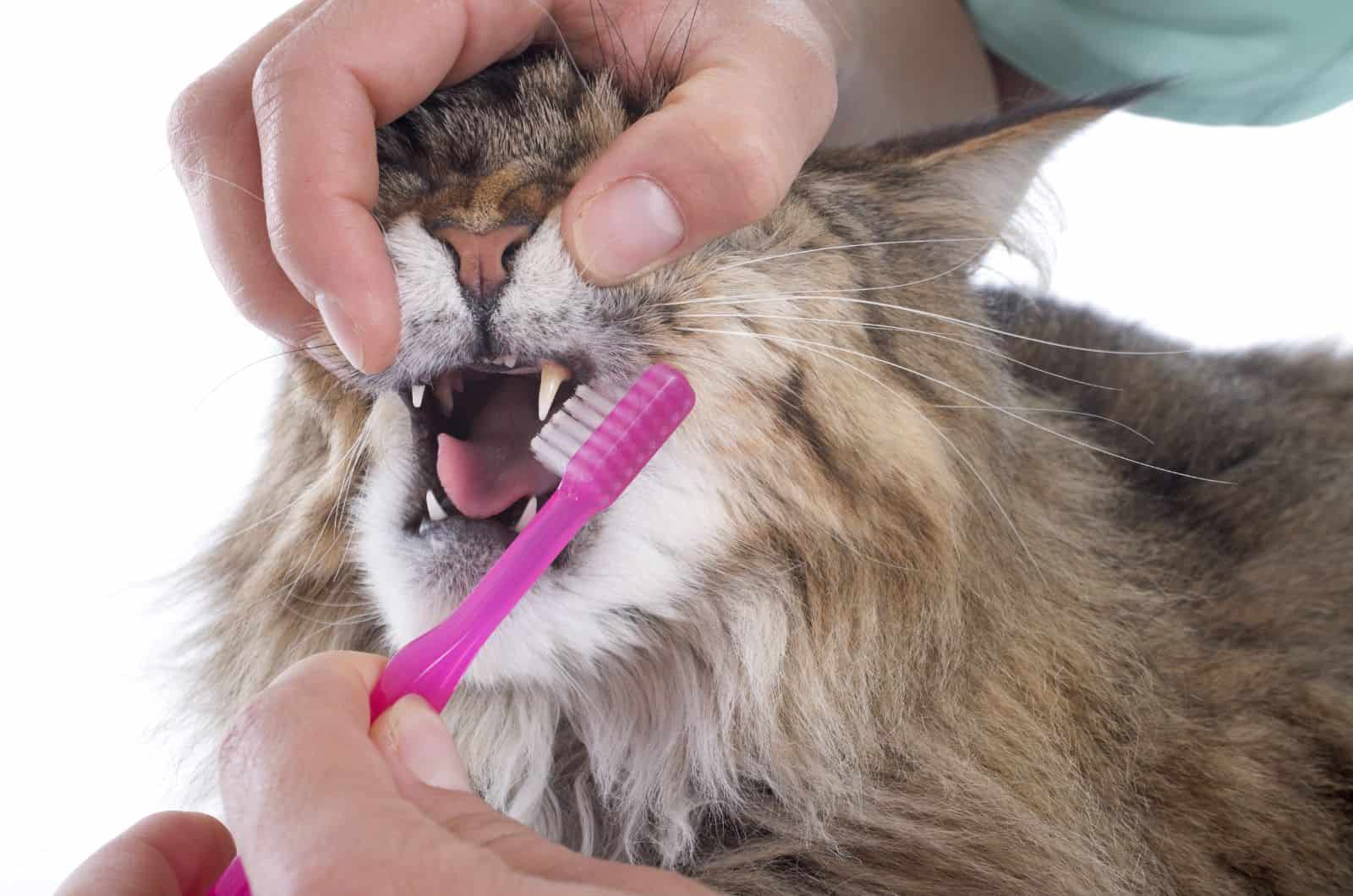
When tartar buildup occurs, it is too late to remove it just by brushing your cat’s teeth. Luckily, it can be prevented from forming in the first place!
If perhaps your cat’s teeth are already dirty, i.e. they have tartar on them, you’ll have to seek your vet’s help, but after that, you can prevent it from happening ever again!
Keep regularly brushing your cat’s teeth, and do it on a weekly basis for the best results! Your cat’s teeth will be plaque-free and tartar-free, as well! That’s the goal!
When brushing your cat’s teeth, use a special brush designed for cats with soft bristles. Seek out a meat-flavored cat-safe toothpaste so it’s not repulsive to your cat. First, rub the toothpaste with your fingers across the cat’s teeth, and then continue with the toothbrush.
At first, it won’t be easy, and it will most likely take some time before your cat gets used to it, but eventually, teeth cleaning sessions will be a delight.
Be Careful…
Always, before you do or change anything in your cat’s life, discuss it with your vet. You need to be careful and brush your cat’s teeth with a recommended feline toothpaste and never human toothpaste.
You will find cat toothpaste in most pet shops. Human toothpaste includes components that may be hazardous or even toxic to your cat.
Be wary of any commercials for “wondrous” solutions and “remarkable” products like dental sprays and gels, which promise to eliminate tartar buildup.
These are never a replacement for a dental check-up and professional dental cleaning, they can (in most cases) only be harmful to your cat.
Professional Dental Cleaning
Professional dental cleaning is always performed by a vet, and that is the only option you have once tartar forms and hardens on your cat’s teeth.
Cats, in general, wouldn’t stand still and let a vet do it since they need to go a bit under the gum line to remove the tartar completely, so it’s always done under anesthesia.
After the vet cleans off the tartar, with the help of special dental instruments, the teeth are polished. By polishing your cat’s teeth, the surface of the teeth is smoothed out, which helps prevent new tartar formation.
In order to avoid dental problems in the future, schedule a dental care check-up once a year to see whether your cat needs another professional dental cleaning.
Other Dental And Periodontal Diseases
Dental disease is a condition that affects both young and senior cats. Dental disease is more prevalent and severe in elderly cats, just as dental health deteriorates with age in people.
Dental disease in cats is frequently related to the buildup of dental plaque and tartar, which can result in ‘periodontal disease’, i.e. illness that affects the teeth and the area around teeth.
The most common signs of dental disease you might notice include:
• the cat paws at its mouth
• the cat appears in pain when chewing
• food falls out of the cat’s mouth
• the cat starts drooling excessively
• the cat has extremely bad breath
Prevention
The easiest approach to avoid dental problems in your cat is to practice regular oral hygiene and reduce tartar accumulation on his teeth.
The best method to keep your cat’s teeth healthy is to take them for dental checkups regularly and book in for a professional cleaning at the veterinary clinic.
At home, you should brush your cat’s teeth and give your cat treats that are approved by the veterinary oral health council.
Dental cleanings and treatments at your veterinarian’s practice should always include dental x-rays and pain medicine for any extractions and should be treated under general anesthesia at all times.
Dental x-rays are required for every dental operation, even a routine cleaning, to guarantee that there is nothing concerning going on either on the teeth or under the gums where the vet cannot see.
Sometimes a tooth may need to be removed and post-extraction radiographs are necessary to guarantee that the whole tooth has been extracted, with no partial roots remaining that could cause pain to the cat later.
Brushing your cat’s teeth gently at least two times a week, if your cat tolerates it, is the most effective way to remove plaque at home. There are a variety of cat-specific toothbrushes and different kinds of toothpaste available for you to try.
Always use the ones that were approved by the VOHC, and never use human toothpaste since it can be harmful to your cat.
If you are unable to clean your cat’s teeth, there are several additional methods for improving your cat’s oral health without a professional’s help.
Consult your vet about alternative dental rinses, treats, water additives, wipes, and prescription dental diets that may be appropriate for your cat.
Plaque
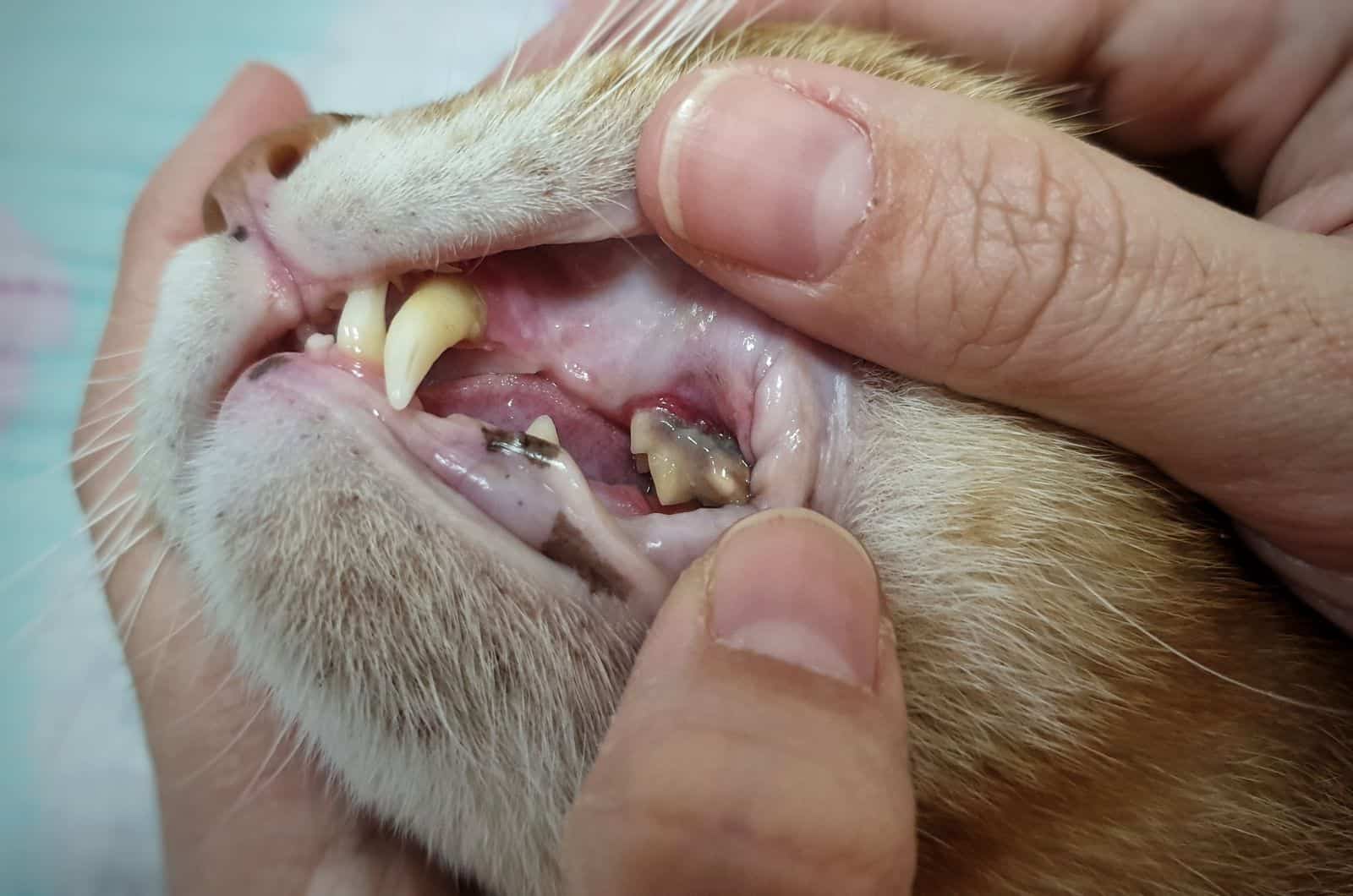
Plaque is a complicated bacterial coating that builds up on the surface of teeth. The plaque coating is initially invisible, but it can be seen by applying a ‘disclosing solution’ that dyes the plaque film.
As the plaque layer thickens, it can be observed as a soft, greyish, or white film on the enamel surface.
Plaque is significant because it is the leading cause of dental disease occurrence. Taking action to prevent dental plaque formation is a key step in avoiding teeth tartar and dental diseases in cats.
Brushing and chewing on dental treats removes plaque, which helps to maintain the gums healthy.
Gingivitis
Gingivitis is an infection of the gums. Gingivitis is quite prevalent in felines of all ages, but the severity varies greatly. We can divide gingivitis by severity into mild, moderate, and severe gingivitis.
Mild Type Of Gingivitis
Mild gingivitis affects felines of all ages. It can happen as soon as two days after cleaning treatment if plaque buildup has begun. Mild gingivitis has little effect on the tooth root of the teeth, and in most instances, it can be quickly reversed.
Moderate Type Of Gingivitis
Gingivitis of moderate severity is also fairly prevalent. If plaque builds up on the teeth, the gum tissue will become increasingly irritated over time. Gum recession can sometimes be visible at this point.
Gingival “pockets” can also be seen; these are areas where the gums have begun to detach from the tooth crown, creating an ideal environment for chunks of food, germs, plaque, and tartar to get trapped and build up.
Many cases of mild gingivitis can be corrected with routine home treatment as long as tartar hasn’t already developed. Gingival pocket development is more challenging to reverse, so you will need to seek your vet’s help.
Severe Type Of Gingivitis
Severe gingivitis can be extremely unpleasant and painful for a cat. Drooling, bad cat breath, pawing at the mouth, trouble eating, and sometimes bleeding, may be observed in the cat.
Cats with a lot of tartar and plaque on their teeth are prone to severe gingivitis.
Gum recession is also prevalent, although since a cat’s gums are quite inflammatory, it is not usually evident. Gingival pockets are visible and often deeper than in mild gingivitis.
Brushing cannot usually correct severe cases of gingivitis, and the cat’s mouth is likely to be too uncomfortable to brush.
To scale and polish the cat’s teeth, general anesthesia is frequently required. If a severe gum recession has occurred, where the root of the tooth is revealed, that tooth might need to be extracted.
After dental treatment, frequent brushing and better oral hygiene overall are needed to prevent this condition from recurring.
Stomatitis
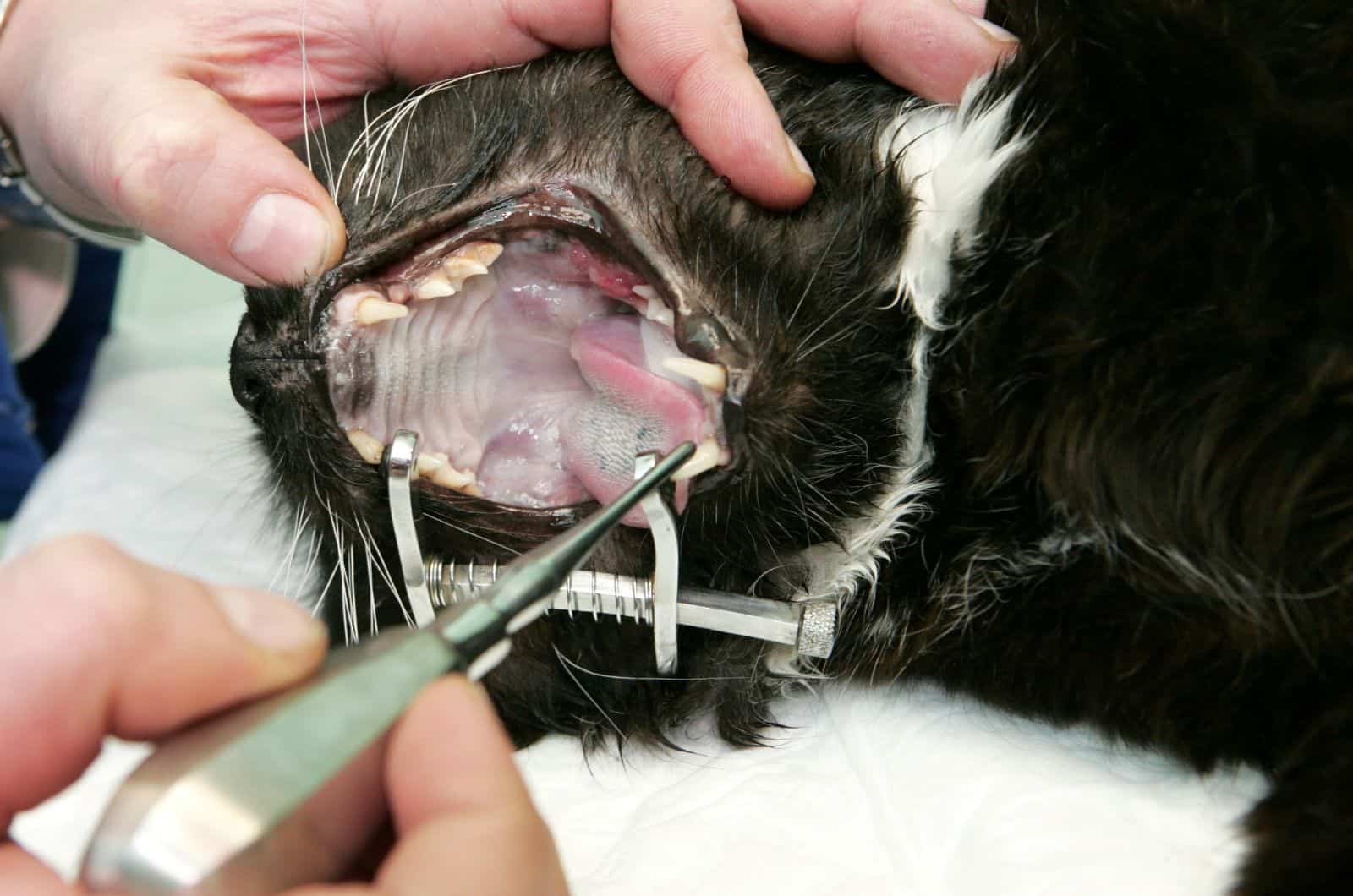
Stomatitis is an oral cavity inflammation (inflammation of the gums and insides of the mouth). Cats can develop lymphocytic plasmacytic gingivostomatitis complex (LPGC) or chronic gingivostomatitis.
In this condition, the inflammation extends from the cat’s gums to other parts of the mouth. This most commonly occurs in the rear of the mouth (the ‘faces’ or ‘glossopalatine folds’). However, the inflammation can occur elsewhere in the mouth.
The cause of this condition is uncertain. Some instances are linked to chronic FCV infection and FIV infection, which might be risk factors.
While tartar and dental plaque could be present, the level of inflammation can vary greatly; the cat’s immune system is overly reactive to the presence of bacteria.
Dysregulation of the immune system is believed to play a role in this disease, as it can respond to carriers of infections in the cat’s mouth.
This is a very painful condition, and cats often have difficulty eating, or they start drooling excessively, swiping their paws at their mouths, and exhibiting other signs of mouth pain.
Your cat may also lose weight because the condition reduces its appetite and makes eating painful. A variety of treatments are available, including initial scraping and cleaning of teeth, at-home care after, prescribed antibiotics, and/or anti-inflammatory medications.
The response to treatment varies, with many cats requiring corticosteroids to reduce inflammation and possibly other more effective anti-inflammatory and immunosuppressive agents.
Some cats with severe cases of stomatitis may benefit from the extraction of all molars. This may be necessary to remove all the stubborn bacterial sites in the cat’s mouth.
Periodontitis
Periodontitis is a very advanced version of gum disease that is most common in older cats. The gums are usually extremely inflamed and often quite deeply recessed. Teeth usually have a lot of tartar on them.
The ligaments that surround and support the teeth are also diseased and usually begin to deteriorate, revealing the roots of the teeth and making the teeth unstable. Bacterial infections are quite common, and pus is often seen around the affected teeth.
Clinical symptoms resemble those of a severe type of gingivitis. At this stage, the tooth is so damaged that the only thing that can be done is pulling it out.
Tooth Fractures
Fractures should be evaluated individually before deciding whether extraction of a tooth is necessary.
As a general rule, teeth that have erupted into the dentin or cavity will most probably need to be extracted because the tooth will be painful and at risk for infection or root abscess.
If only the tip of the tooth crown is broken and no dentin or pulp cavity is revealed, extraction may not be necessary. However, the enamel that covers a cat’s tooth is so thin that most broken teeth will almost certainly need to be extracted.
A probe can be used to determine if a tooth extraction is necessary. Cats with broken teeth may exhibit signs of pain such as mouth pawing, excessive drooling, and a preference for eating on one side of the mouth.
Feline Resorptive Lesions
Feline resorptive lesions (FRLs) occur in both younger and older cats. It is estimated that the majority of cats over the age of four have at least one FRLs.
FRL is tooth erosion that usually forms around the gum line but can also be seen below the gum line in some cases. The cause of FRL is uncertain. However, the erosions contain cells called odontoclasts which tear down the tooth’s material.
FRL can be difficult to identify when examining a cat’s mouth. It often requires a veterinarian to examine the teeth under anesthesia to identify them.
The gums react by becoming inflamed due to tooth decay and “filling” in the holes in the teeth. FRL can be diagnosed by dental x-ray or dental probing under general anesthesia.
Feline resorptive lesions are very sensitive, and cats experiencing it often show signs of pain.
Factors Influencing Dental Diseases

Cat’s Diet
Diet is thought to play the biggest role in the progression of periodontal disease in most cats. Giving only wet food to your cat has little or no abrasive effect on the teeth, and therefore, it does little to prevent plaque build-up.
Wet food accumulates around the teeth and encourages the formation of bacteria and plaque. Dry foods are thought to be better because while chewing on kibble, your cat’s teeth get scraped. The overall relationship between foods and dental disease is complex.
It helps to seek out cat food that is designed to help with your cat’s dental health.
As I mentioned already, you can talk to your vet about a special dental diet that is specifically designed to prevent tartar and plaque buildup.
These meals typically consist of kibble and/or special portions of wet food that are more abrasive to the teeth and help reduce tartar buildup.
Infections
Some viral infections are linked to gingivitis, so your veterinarian may recommend testing for FIV, FeLV, or feline calicivirus (FCV). FIV and FeLV can cause immunosuppression and a predisposition to periodontal disease and gingivitis.
Stubborn FCV in the mouth has been linked to chronic severe gingivitis or stomatitis.
Teeth Alignment
Teeth that are misaligned in the mouth are more prone to acquire tartar and plaque than teeth that are appropriately positioned. This is because when the teeth are misaligned, food is more likely to get stuck in between and on the surface of the teeth.
Teeth alignment issues usually occur because of deciduous teeth and teeth retention, congenital abnormalities, or some kind of trauma. It is generally more common in short-nosed cat breeds.
How Often Should We Examine Our Cat’s Teeth?
Cats should have their teeth checked by a vet at least once a year, and cats that have suffered from dental issues in the past should be checked every six months, depending on their current health.
In general, the earlier an issue is recognized, the easier and faster it is to cure.
Even if you check and examine your cat’s mouth every day, dental disease may begin and gradually become worse. Cats sometimes do not display clinical indications of illness until the condition has progressed to the point where numerous teeth must be pulled.
Final Thoughts
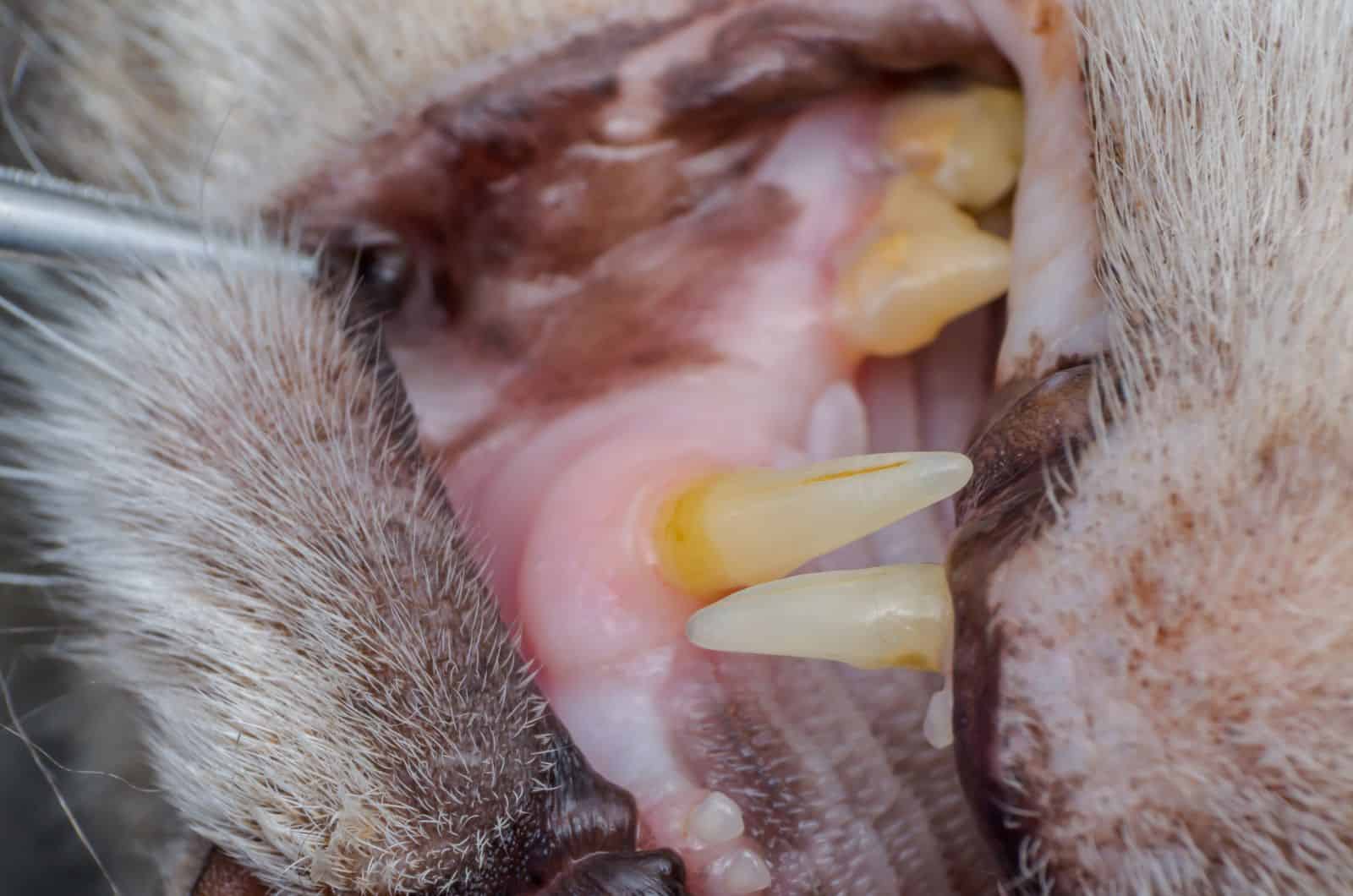
All in all, cat teeth tartar is an issue that can be easily prevented, but if it has already formed, it needs to be cleaned off right away!
If plaque buildup isn’t removed promptly, it leads to tartar formation, which can lead to more severe dental and health issues if left untreated.
Your vet is there to help, so if you notice anything yellowish or any dirt getting stuck on your cat’s teeth, or if your cat has bad breath, visit the vet.
I hope this has helped and that you’ll know in the future how to get rid of cat teeth tartar, plaque, and bad breath, so your cat stays healthy and happy. Always remember that almost everything can be solved once we act on it promptly!
Related articles:
• Cat Teeth Age Chart: How Old Is My Cat According To Her Teeth?
• Cat Licking Lips – 11 Possible Reasons For This Behavior
• Cat Not Eating Much But Acting Normal: 7 Reasons Why
